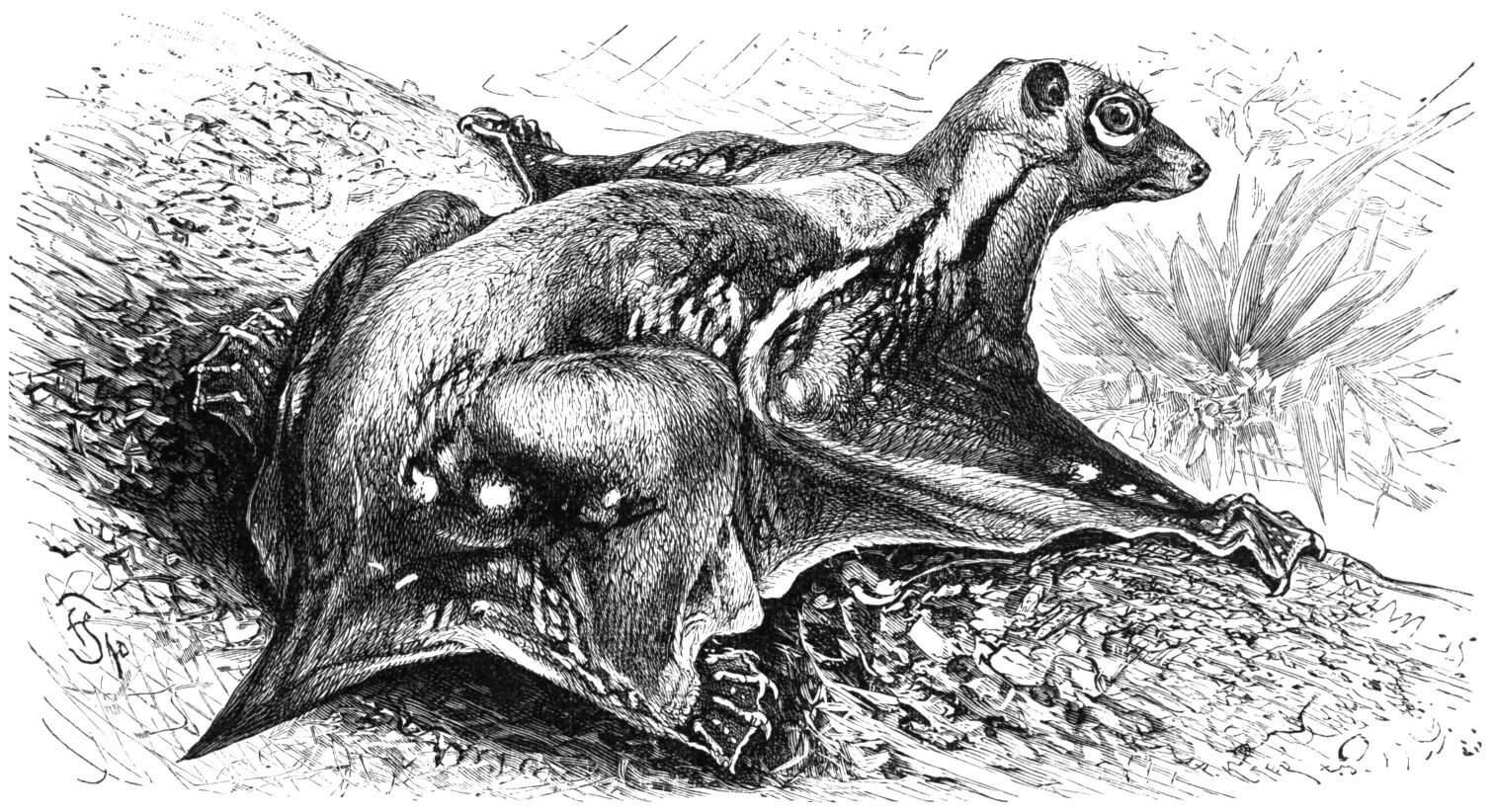What does a Flying Lemur look like? Quick facts about the Flying Lemur bat, features, characteristics.

Source : wikipedia.org
Flying Lemur; a nocturnal tree-dwelling mammal native to the forests of tropical Southeast Asia east to Borneo and the Philippines. The flying lemur, also known by the native name “colugo,” is characterized by its long, slender legs and tail and a furry skin (the gliding membrane) extending from the sides of the neck and body to the tips of the fingers, toes, and tail. It is typically brownish or grayish above, often mottled or spotted with white, and paler and unspotted below. Its skull is distinctive in possessing comblike lower incisor teeth; the exact function of these teeth is uncertain, but they may be used in grooming or in stripping leaves for food. Flying lemurs may reach 17 inches (43 cm) in head and body length, plus a 12-inch (30-cm) tail, and usually weigh from 2 1/4 to nearly 4 pounds (1-1.75 kg).
Despite their name, flying lemurs cannot fly, but with the membrane stretched out between the extended legs and tail—the “wingspan” of the extended forelegs may reach 3 feet (90 cm) —they glide from tree to tree. Flying lemurs are the most skillful of the mammalian gliders, losing only 3 feet (1 meter) of altitude for every 45 feet (15 meters) of horizontal distance. Glides of over 400 feet (122 meters) have been recorded. Flying lemurs apparently spend the day in tree hollows, venturing forth at night to feed on flowers, fruits, and leaves. One or, rarely, two young are born each year after a gestation period of approximately 60 days.
Flying lemurs are not lemurs (primitive primates) but are classified in an order of their own, the Dermoptera. The order contains a single family (Cynocephalidae), made up of a single genus divided into two species: Cynoceph-alus volans and C. variegatus.